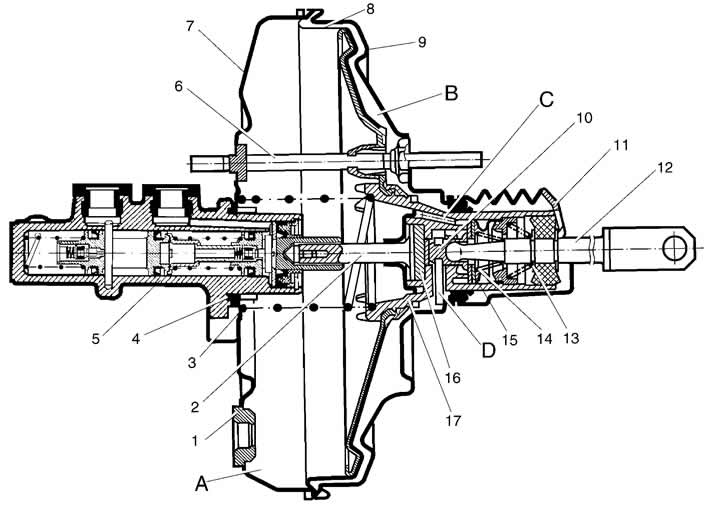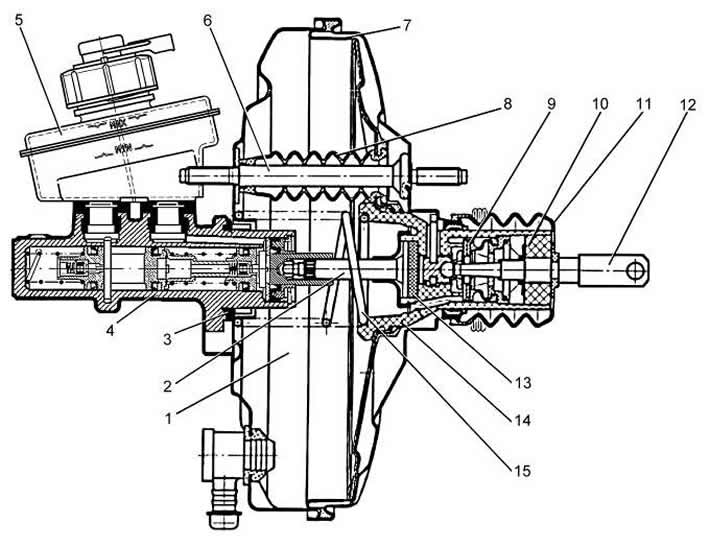
Pic. 6-2. Vacuum brake booster 2123-3510006 (installed on cars produced before 09.2005.):
1 - flange for fastening the tip;
2 - stock;
3 - diaphragm return spring;
4 - sealing ring of the flange of the main cylinder;
5 - main cylinder;
6 - amplifier pin;
7 - amplifier housing;
8 - diaphragm;
9 - amplifier housing cover;
10 - piston;
11 - protective cover of the valve body;
12 - pusher;
13 - pusher return spring;
14 - valve spring;
15 - valve;
16 - stock buffer;
17 - valve body;
A - vacuum chamber;
B - atmospheric chamber;
C, D - channels.
With the brake pedal stopped in the middle of its travel, start the engine. With a working vacuum booster, the brake pedal after starting the engine should «go ahead».
If the pedal «does not move forward», check the fastening of the hose to the check valve of the vacuum booster and the fitting of the engine receiver, the condition and fastening of the check valve to the rubber flange of the booster and the flange to the booster.
In the process of pressing the brake pedal, air passes into the vacuum booster. At the same time, in the cabin you can hear «hiss» sucked air. If «hiss» does not stop when the fixed key is pressed (fixed) brake pedal, this indicates a violation of the tightness of the vacuum booster. In this case, replace the vacuum booster.

Pic. 6-2a. Vacuum brake booster 2123-3510006-11 with master cylinder and reservoir assembly (installed on cars from 09.2005 of release):
1 - amplifier case;
2 - stock;
3 - O-ring of the master cylinder flange;
4 - main cylinder;
5 - tank;
6 - amplifier pin;
7 - diaphragm;
8 - sealing case;
9 - valve;
10 - air filter;
11 - protective cover of the valve body;
12 - pusher;
13 - stock buffer;
14 - valve body;
15 - diaphragm return spring.
